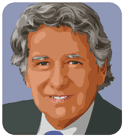While thousands of federal workers in the U.S. went back to work today after grappling with the government shutdown and debt ceiling crisis, Canada’s Parliament has just now reopened for business, with Prime Minister Stephen Harper’s second Throne Speech since his party won a majority government mandate in May 2011.
Coming at mid-term, the speech has been properly described as a new beginning for the Harper government. He outlined consumer-friendly measures such as reducing the gap between cross-border prices on items purchased in the U.S. and greater subscriber freedom in purchasing cable TV packages. In addition, he announced more law and order policies to reinforce his conservative base. All this was presented in the usual pomp of a Speech from the Throne.
The past year has seen the Harper administration facing its most serious crises since it first took office in 2006. Election irregularities in the 2011 campaign have led to departures within the ranks, and a Senate scandal involving three Conservative senators dominated the spring session. Current polls place the Harper Conservatives behind the third party in the House of Commons—the Liberals, under new leader Justin Trudeau. While there is plenty of time for a resurgence before the 2015 general election, the Speech from the Throne delivered on October 16 does represent a potential second wind.
The Conservative victory in May 2011 was so impressive that some seasoned political observers saw the emergence of a new coalition made up of law and order types and Canadians with conservatives values— one which could transform the Conservatives into “the natural governing party” of the nation, as the Liberals were through most of the 20th century. Harper’s Conservative party is also seen as the most ideological party of its nature since Confederation.
Some pundits have postulated that the 2011 shift to the Right may develop into a permanent phenomenon. After all, in that year, the Liberals dropped to third place (Conservatives occupied 161 seats in the House of Commons while Liberals occupied 34) and seemed decimated in key strongholds across the country, including Québec and the greater Toronto area. The progressive view seemed in search of a principal voice. Enter the new official opposition party—the New Democrats (NDP), who are hoping to replace the Liberals as the alternative to the Conservatives.The NDP lost its popular and charismatic leader, Jack Layton, who died shortly after the 2011 election. New leader Tom Mulcair won an impressive leadership contest, but it has become clear that Canadians are still not used to seeing the NDP—often referred to as Canada’s socialist party—as an alternative government. Mulcair, who is an astute politician, has attempted to bring his party closer to the center.
After more than a decade of political infighting, the Liberals became the third party in Parliament for the first time in its history. A leadership race began in the fall of 2012, and ended with the choice of Justin Trudeau, former PM Pierre Trudeau’s son. While lacking his father’s gravitas, the charismatic young Trudeau soon catapulted into first place in the polls. It is still too early, however, to conclude that Canada is on the verge of generational change or a return to Liberal governance. One thing is certain, however: Trudeau has generated new enthusiasm.
With the Speech from the Throne defining the Conservative agenda for the next two years, we can gradually expect greater scrutiny from the media and the electorate of the opposition parties’ leaders and policies. Surely, the Senate scandal will continue to be a dominant issue for the opposition during the Parliament’s question period, which resumes today and will allow opposition parties to question Harper as investigations regarding the scandal are being pursued by the Royal Canadian Mounted Police.
Meanwhile, Prime Minister Harper is expected to stick to his conservative agenda and keep the focus on jobs, the overall economy and possibly a free trade deal with European Union—but in this era of social media, one should expect that policy may not be front and center for some time to come.
Looking ahead, opposition leader Mulcair will need to present his party as a mainstream, progressive and modern outfit ready to govern. Trudeau will have to introduce a more comprehensive view of government, as his personal charisma will not be enough to hold the lead for the next two years. The battle lines are now drawn, and we shall soon see if Stephen Harper has indeed a second wind.





